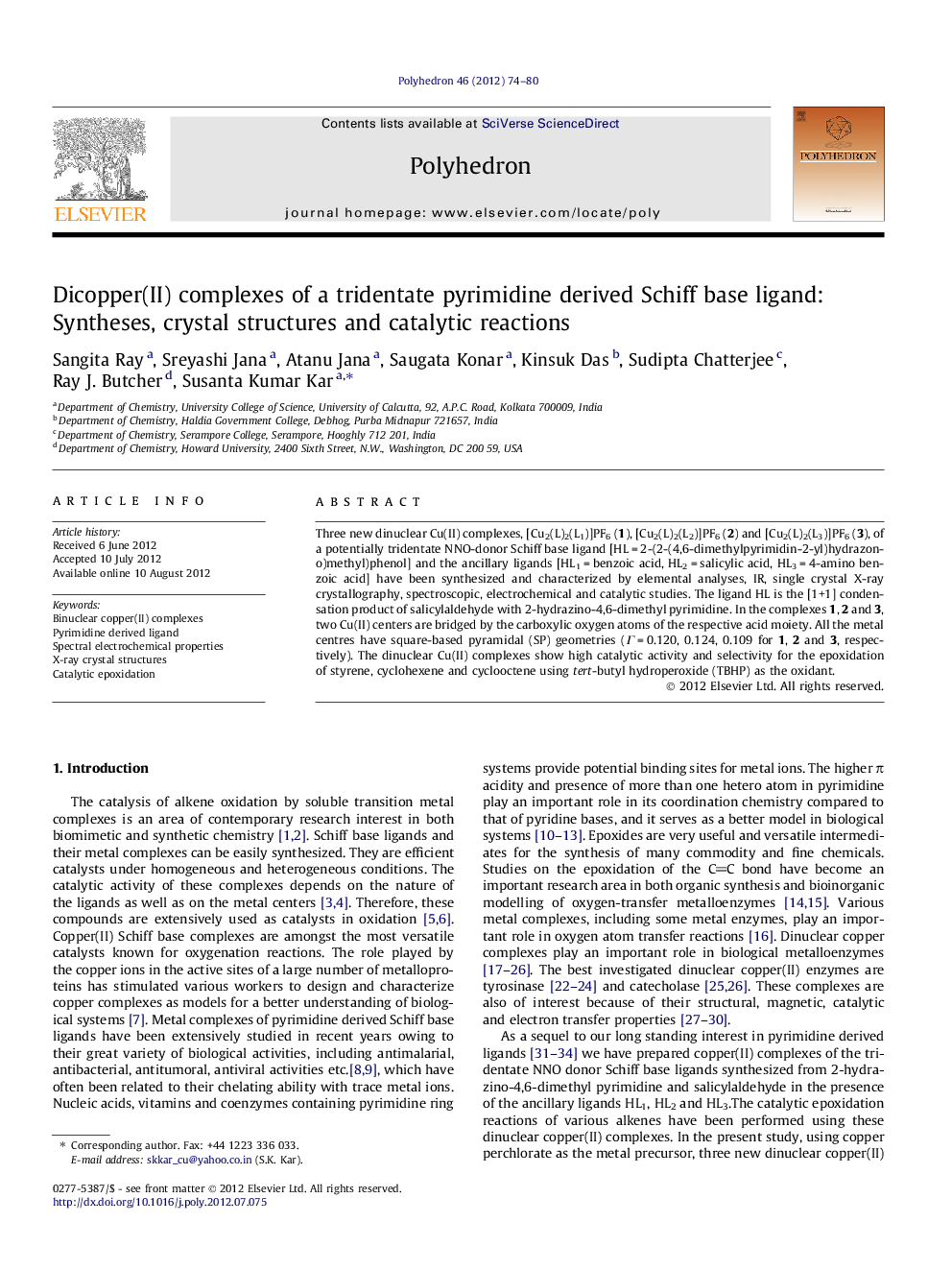| Article ID | Journal | Published Year | Pages | File Type |
|---|---|---|---|---|
| 1334703 | Polyhedron | 2012 | 7 Pages |
Three new dinuclear Cu(II) complexes, [Cu2(L)2(L1)]PF6 (1), [Cu2(L)2(L2)]PF6 (2) and [Cu2(L)2(L3)]PF6 (3), of a potentially tridentate NNO-donor Schiff base ligand [HL = 2-(2-(4,6-dimethylpyrimidin-2-yl)hydrazono)methyl)phenol] and the ancillary ligands [HL1 = benzoic acid, HL2 = salicylic acid, HL3 = 4-amino benzoic acid] have been synthesized and characterized by elemental analyses, IR, single crystal X-ray crystallography, spectroscopic, electrochemical and catalytic studies. The ligand HL is the [1+1] condensation product of salicylaldehyde with 2-hydrazino-4,6-dimethyl pyrimidine. In the complexes 1, 2 and 3, two Cu(II) centers are bridged by the carboxylic oxygen atoms of the respective acid moiety. All the metal centres have square-based pyramidal (SP) geometries (Γ = 0.120, 0.124, 0.109 for 1, 2 and 3, respectively). The dinuclear Cu(II) complexes show high catalytic activity and selectivity for the epoxidation of styrene, cyclohexene and cyclooctene using tert-butyl hydroperoxide (TBHP) as the oxidant.
Graphical abstractSyntheses, crystal structures and catalytic reactions of carboxylic acid bridged Cu (II) complexes of a NNO donor pyrimidine derived Schiff base ligand (HL) are reported. The dinuclear Cu (II) complex 1 shows excellent catalytic activity in epoxidation reaction towards styrene with an impressive conversion (98%) using tert-butyl hydroperoxide as oxidant.Figure optionsDownload full-size imageDownload as PowerPoint slide
